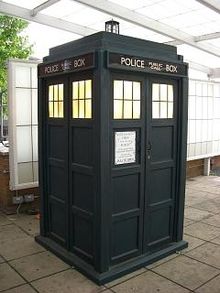I awoke in a panic – couldn’t miss that executive meeting.
Only… Everything around me looked different. The air was musty. The wooden boards
of my bed creaked. I heard the rhythmic clacking of horse-hoofs.
In total confusion, I went outside, scratching my head.
People were looking at me like I was crazy – I looked down – my shirt was a day
old, but no one could have known. My tie was decent… Except no one else was
even wearing a tie. I told myself that I must have gotten smashed last night
and ended up in Colonial Williamsburg. My phone was about to die, but I quickly
tried to send a text that I would be late to the meeting. No service. I would
be stuck here for a while.
It took me about a week to realize (and accept the fact
that) I had been transported back in time to the late 19th century. But
without knowing how or why, I, in my pragmatist ways, set out to utilize that which
I had become famous for – fulfilling the American Dream.
One morning, I bought a newspaper; Mark Twain had written an
article. People were chuckling at it in appreciation, but I resisted the urge
to roll my eyes. It was too wordy. You see, in my world, eloquence doesn’t stem
from one’s ability to construe an artful sentence. Instead, we judge literary
prowess by one’s ability to encrypt computer code. In addition, we value a “less is more” kind of
approach when it comes to digital communication, which is basically the only
kind of communication we use. Abbreviations, acronyms and brevity are
commodities. Sure, literature exists in art forms; but those are practically obsolete;
or worse: bookish. I used to be considered a nerd, until the nerd became the
new jock. But Bookish –well, that won’t secure you a spot, grassy and green as
money, in the Valley of Silicon.
Twain’s Patriotic article got me thinking… His pride in the
democracy of his day was, to put it mildly, kind of cute. For our democracy today
is far superior to that of his time. Our ability to globalize democracy using
technology, now that’s something to be proud of. We’re better at democracy because
we can sell it, not by inciting wars and revolutions, but by exploiting the freedom
of expression with the click of a button. A Syrian war refuge can leak footage
on Facebook, a North-Korean citizen can Instagram a picture. Our democracy
today is the democracy of the First Amendment. It’s a step above from the mere
liberation from a tyrant.
So is Twain deluding himself into thinking that his America
boasts a utopian democracy? What kind of system turns a blind eye to slavery,
or prevents women from voting, or getting an education? Sure, Twain himself and
his contemporaries had the freedom to write whatever they wanted; but now, with
the advancement of an online
civilization, where country borders are blurred and bridges made out of
computer code are constructed across continents, democracy can really flourish. The first amendment of
the United States can be upheld globally. And technology is the answer. It will solve our problems.
So I set to marry technology and democracy, for I knew,
based on my knowledge of the future, that it’d prove a happy and fruitful
union. I began to set up networks across the town. I didn’t have the know-how
to do this alone, but I knew enough algorithms to get the right kinds of minds
started. My team and I worked tirelessly and endlessly for years on end.
And it was a massive success. Just as I knew it would be,
social media began to reign. And it evolved quickly, almost too quickly.
Eventually, the global society running under my thumb became
a world that was entirely virtual. But I was pleased with the result because
that was the future of technology – people wouldn’t have to exist in the real
world any longer. People were in love with the concept of being avatars,
creating identities online and living virtually through them. I blurred the
lines between reality and fantasy. Until finally, everyone was so hooked, that
my world imploded.
Robert Frost once said that the world may end in “fire or
ice.” Well, technology had frozen the world of human interaction. I had gotten
civilization to the point where I wanted it to be, in the name of globalizing
democracy; but in the end, I killed the need for a democracy at all, because I
had no civilization left to work with; only a population of cyborgs.
Fire or ice, it doesn’t
matter. Hank’s with fire, mine with ice. I thought his democracy was primitive,
but looking at mine, I realize that society hasn’t advanced at all. 
 or
or  etc etc.
etc etc.










